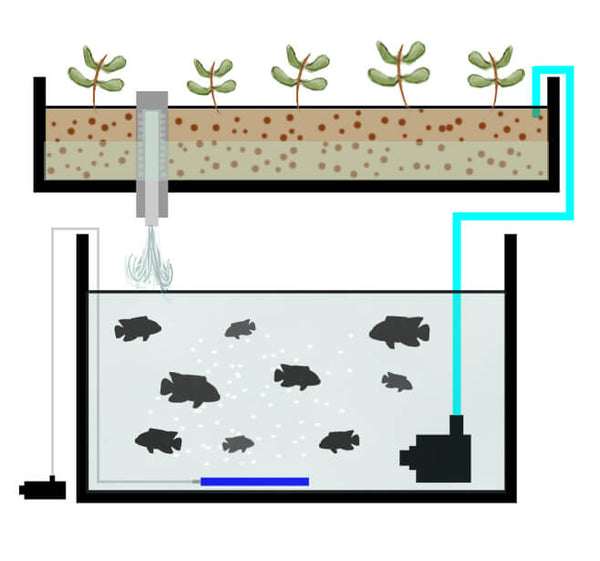Pickup your order for free
Pickup your order for free

Aquaponics is a combination of aquaculture and hydroponics. Aquaculture is the raising of fish and other small aquatic creatures, whilst hydroponics is the growing of plants using a water-based system in place of traditional soil. Aquaponics is an incredible system that has seen huge growth in popularity all over the world, with Australia taking the lead in the commercial industry.
The magical thing about aquaponics is that it uses the concepts of aquaculture and hydroponics in a combination whereby the plants and fish form a totally organic ecosystem, eliminating most of the negatives that we see when using only one system without the other. Aquaculture produces a lot of waste from the fish and more often than not can cause the fish to become sick leading to the need for antibiotic treatment. Aquaculture often leads to the dumping of fish waste into rivers and oceans. With hydroponics, the plants need chemical nutrients which also cause water pollution.
 Aquaponics has a third party called microbes which help the system work. These bacteria play an important role by converting the ammonia from the fish waste into nitrites and then nitrates, which are the form of nitrogen that plants love to use for food. The plants feed off the fish waste and then in turn filter the water giving the fish clean, fresh water to thrive in. In fact, the fish and plants don’t just grow in an aquaponics system, they flourish!
Aquaponics has a third party called microbes which help the system work. These bacteria play an important role by converting the ammonia from the fish waste into nitrites and then nitrates, which are the form of nitrogen that plants love to use for food. The plants feed off the fish waste and then in turn filter the water giving the fish clean, fresh water to thrive in. In fact, the fish and plants don’t just grow in an aquaponics system, they flourish!

Other benefits of aquaponics include:

So what kind of fish and plants can one look at in an aquaponics system?
Obviously freshwater fish will need to be used, with your best options being Tilapia and Barramundi. These two fish tolerate diverse water conditions well and grow fast. One can also use Trout, especially in colder water conditions. Other popular options include Perch, Catfish, Carp, Bass, Koi, and even Crustaceans.
As for plants, the list is quite extensive. Plants that don’t need heavy nutrient input are lettuce, watercress, rocket, kale, herbs, mint, spring onions, leek, spinach and radishes. Slightly more nutrient hungry are plants such as cabbage, cucumbers, beans, broccoli, peppers, squash, cauliflower, beans and tomatoes. One must avoid growing plants that need acidic or alkaline water as those kinds of pH levels can harm the fish.
Others have also had success with bananas, dwarf citrus trees, sweet corn, beets, carrots, onions and edible flowers.